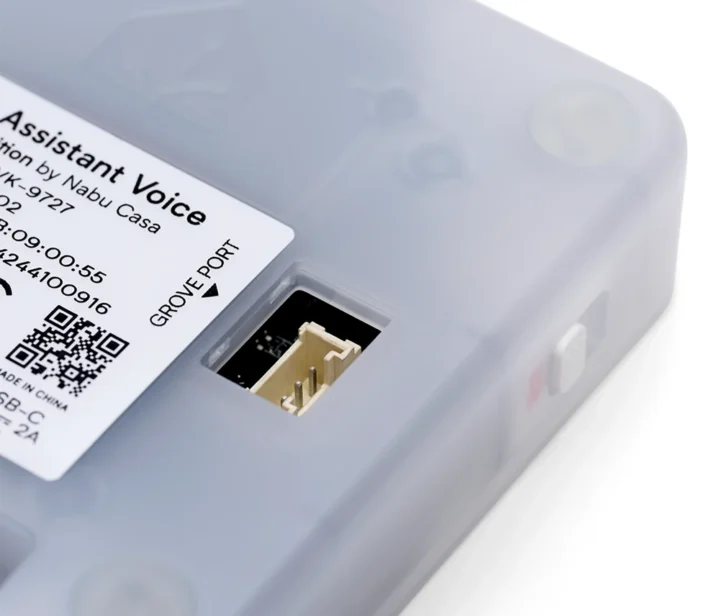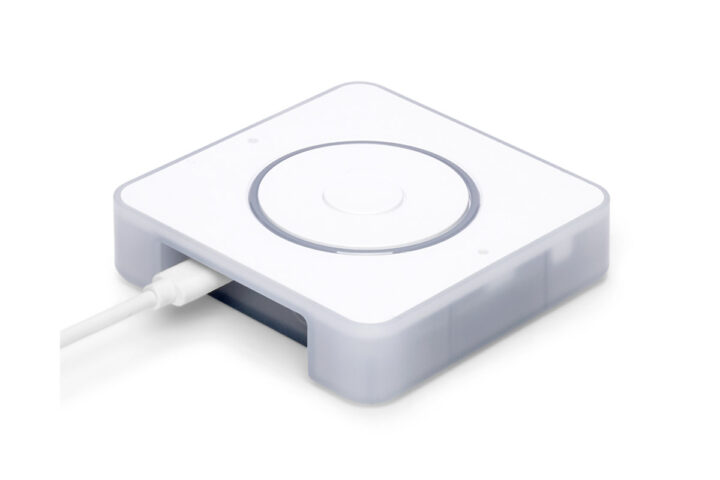Nabu Casa has just launched the Home Assistant Voice Preview Edition, a little ESP32 device with an XMOS XU316 audio processor, a dual-microphone array, an internal speaker, and a 3.5mm audio jack, that adds offline smart speaker functions to your Home Assistant server through WiFi.
If your Home Assistant server is powerful enough, voice processing will be done directly on your local hardware using Home Assistant Voice software, but with lower-end hardware like a Raspberry Pi 4, audio processing can be done via a privacy-focused cloud instead. The solution also supports expansion thanks to a Grove connector on the bottom of the device.
Voice Preview Edition specifications:
- SoC – Espressif ESP32-S3 dual-core Xtensa LX7 @ up to 240 MHz with vector extension for ML acceleration, 2.4 GHz WiFi & Bluetooth 5.0 LE connectivity
- Memory- 8 MB octal PSRAM
- Storage – 16 MB flash
- Audio
- DSP/Processor – XMOS XU316 with 16 real-time logical cores, support for echo cancellation, stationary noise removal, auto gain control
- TI AIC3202 DAC with 48 kHz sampling rate
- Input – Internal dual-mic array
- Output
- Internal speaker
- 3.5mm stereo headphone jack
- Expansion
- Grove port to connect sensors or other accessories
- Exposed pads on PCB for modding
- Misc
- Multipurpose button
- Rotary dial for volume and other input
- Mute switch that physically cuts power to the microphone
- Power Supply – 5V/2A via USB-C port
- Dimensions – 84x84x21 mm
- Weight – 96 grams
- Temperature Range – 0°C to 30°C


Nabu Casa says the ESPHome open-source firmware is preloaded on the ESP32, and the firmware for the XMOS chip is also open-source. All you need is Home Assistant already configured on another device. For fully local speech processing, it is recommended to have a Home Assistant system based on an Intel N100 or higher. Low-end hardware such as the Home Assistant Green or Raspberry Pi 4-powered hardware will require a Home Assistant Cloud subscription for optimal speech processing performance. In all cases, this is handled by the open-source Assist voice assistant part of the Home Assistant project.
English, Spanish, and Portuguese are all fully supported through local processing and the cloud service, but your mileage may vary with other languages, and for example Thai and Chinese (Mandarin) are not supported at all on the device, and more work is needed for the cloud service. You can check whether your language is supported on the Home Assistant Voice Control page. The documentation has more details to get started with the kit.
The Voice Preview Edition can be purchased today for $59/€59 (MSRP). Additional information can found on the product page.

Jean-Luc started CNX Software in 2010 as a part-time endeavor, before quitting his job as a software engineering manager, and starting to write daily news, and reviews full time later in 2011.
Support CNX Software! Donate via cryptocurrencies, become a Patron on Patreon, or purchase goods on Amazon or Aliexpress





